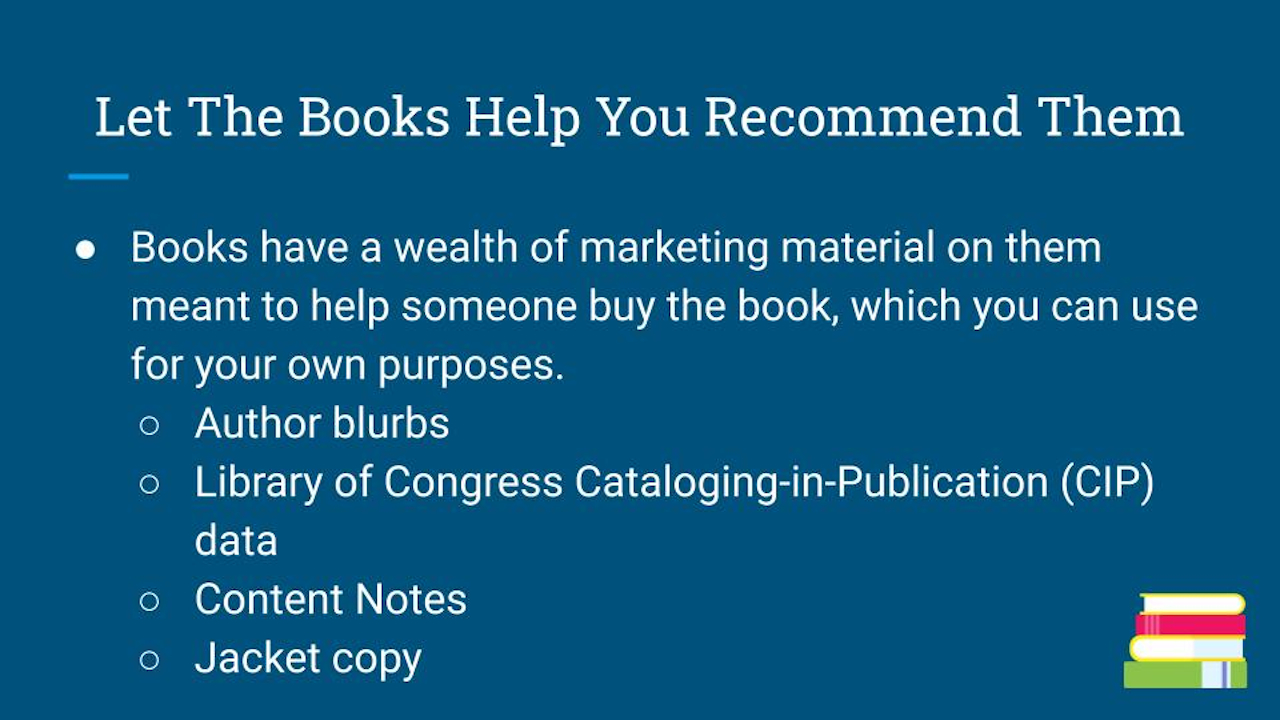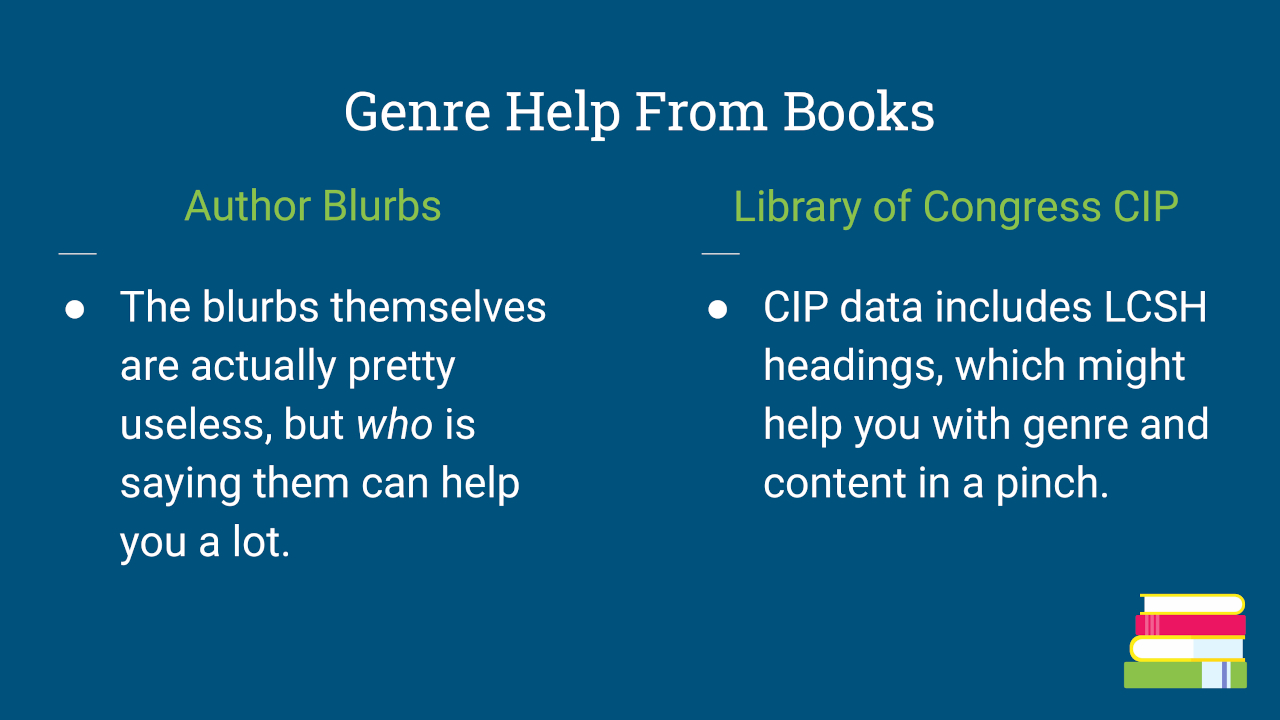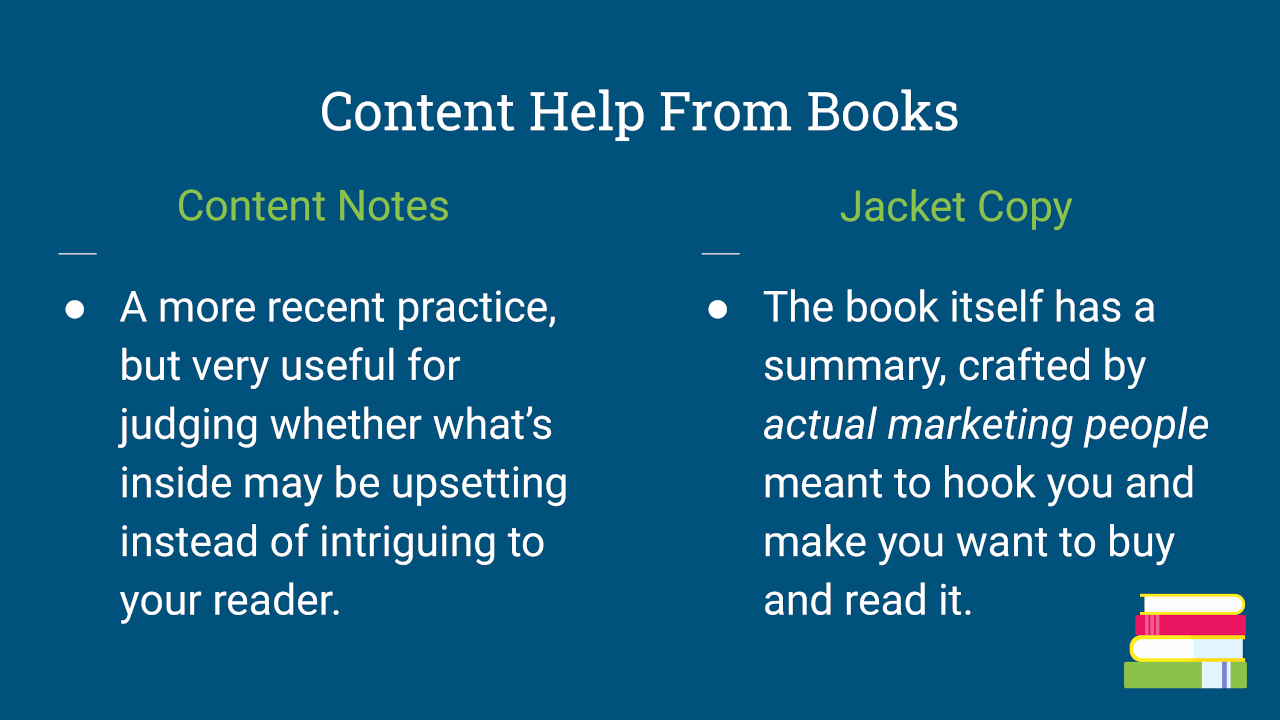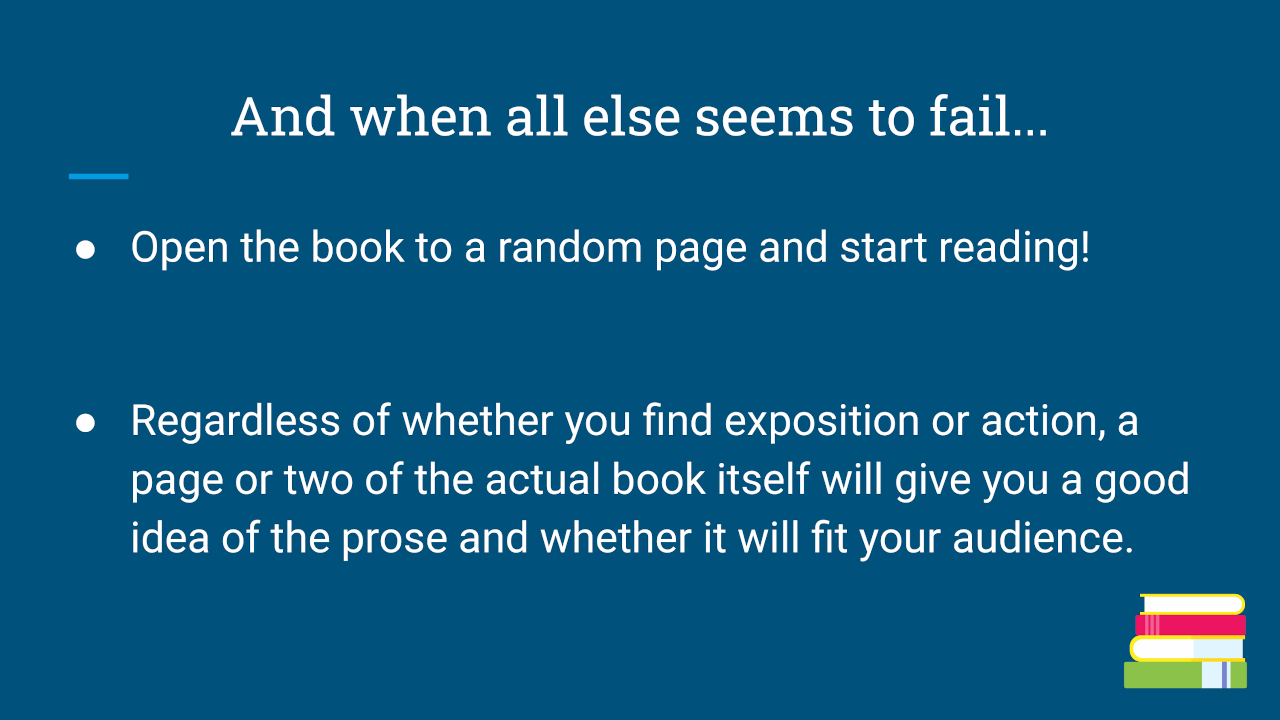
Most of the materials you will come across have marketing blurbs and other things to help you convince a reader/listener/viewer decide to read/listen/watch them. After all, they're not just here to be borrowed from a library, they're there to be sold in stores!

Most materials have a pull quote (or three) on them that's praising the material in some way. What those blurbs are is often useless, because many of those blurbs have been hacked apart quite a bit and shortened to make them fit the copy on the book or disc cover. Who is giving those blurbs, however, is important, because it often gives clues about where in genre space you should be situating this unknown work.
The Library of Congress often published some data in a book (not so much for non-books, unfortunately) that will have its subject headings and some other cataloging data in the actual thing itself, so that an enterprising cataloger who wants to add the book to their collection will at least have a little bit of data to populate their records with, in addition to the author and title and the like. Sometimes it's a long shot, but the Cataloging-in-Publication data might be helpful to see if there's something that you can key into about the book that's not explained elsewhere.

It's not a widespread practice in the publishing world, but it is becoming more and more likely for a work to include a page, either at the front or the end, that contains content notes (sometimes called "trigger warnings") about what the book itself has inside, so that people who are especially sensitive to such issues, either due to past or ongoing traumas or phobias,, will know what to expect in the book, even if it isn't spelled out completely on the content note page. Content notes, if present, are really useful tools for checking to see if something that otherwise would be really appealing or interesting to a person requesting a recommendation turns into an anti-recommendation, based on their sensitivities to the issue.
In addition to the author blurbs on the cover, most media pieces have several paragraphs of material designed to tryand entice you into buying the book (or checking it out) on them. Paperback books and most media ptoperties have on their back and hardcover books have it on one of their inside jacket columns. It's material that's been specifically workshopped and refined by a marketing department to be as yummy and attractive as it can be to a potential buyer. I've often found it helpful in picking out keywords and tropes that I can then communicate to the person looking for a recommendation. Sometimes it'll be really helpful, and sometimes, not so much.

Sometimes, you'll get through all of theese possible tools, and some of your other tools, and you still will have someone who isn't sure, or isn't sold, or otherwise just hasn't yet come to a conclusion about whether they want it or not. In that case, if they're not really sure, the best thing to do is open to a random page and start reading. If there's enough in the actual prose to get someone to want to keep going, then that's a success. If not, maybe the book is still good, but that spot isn't particularly good. Either way, because people have such different tastes in their books, even within the same genre, remember that we're still talking about one of approximately 200,000 or more books available to try. There's something out there for this person to have as their next book, even if this one turns out not to be the perfect book for them.